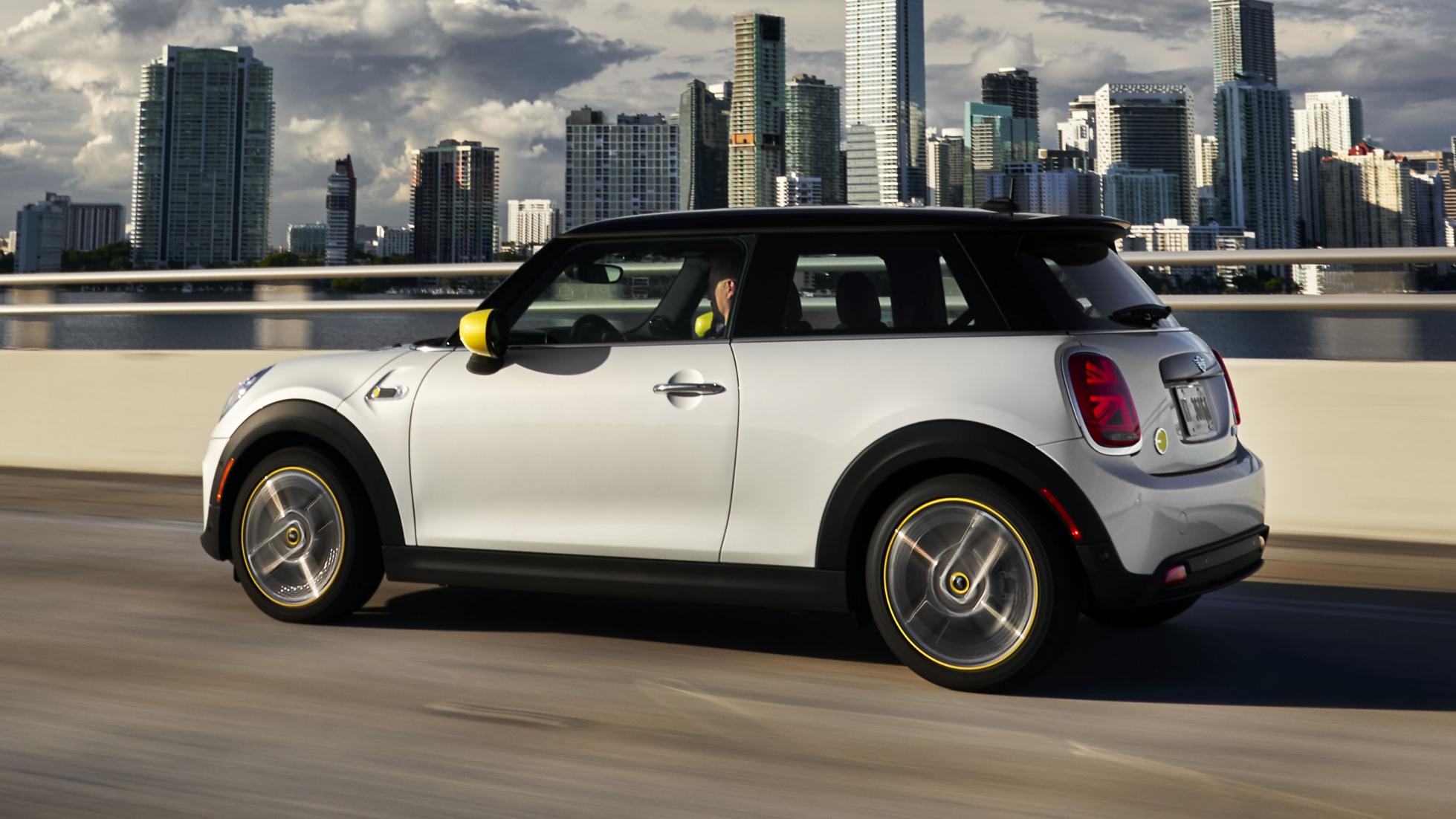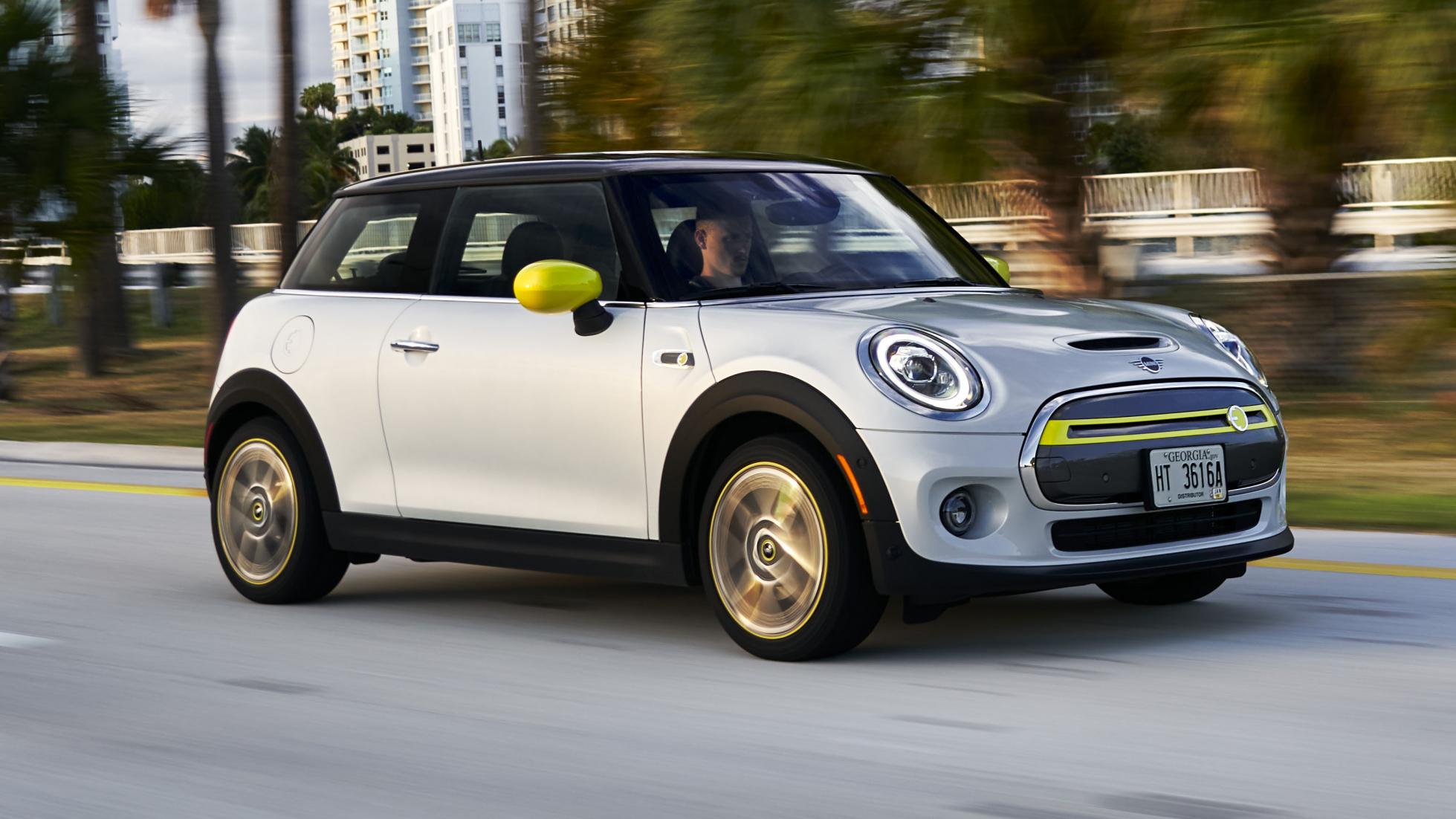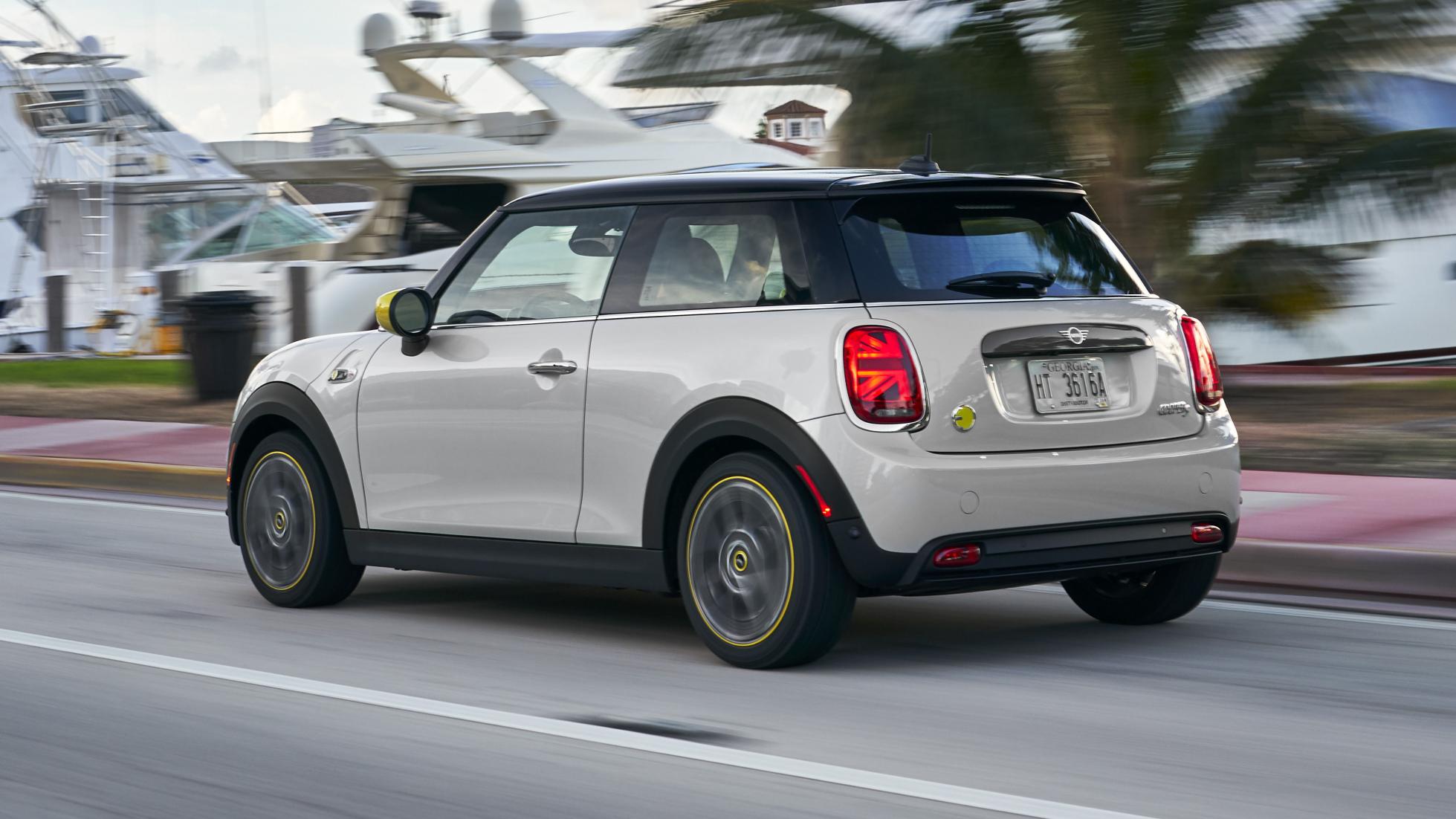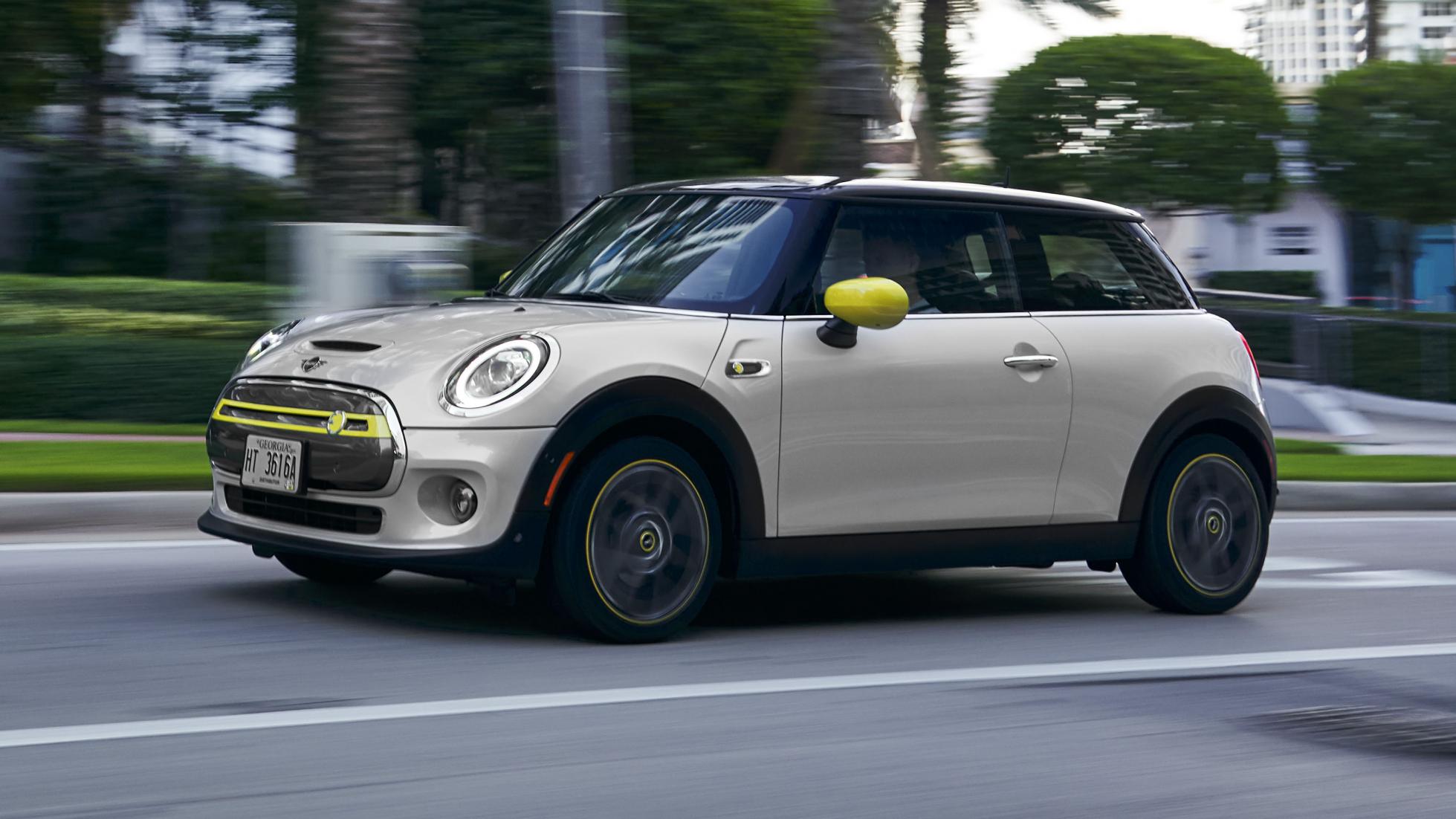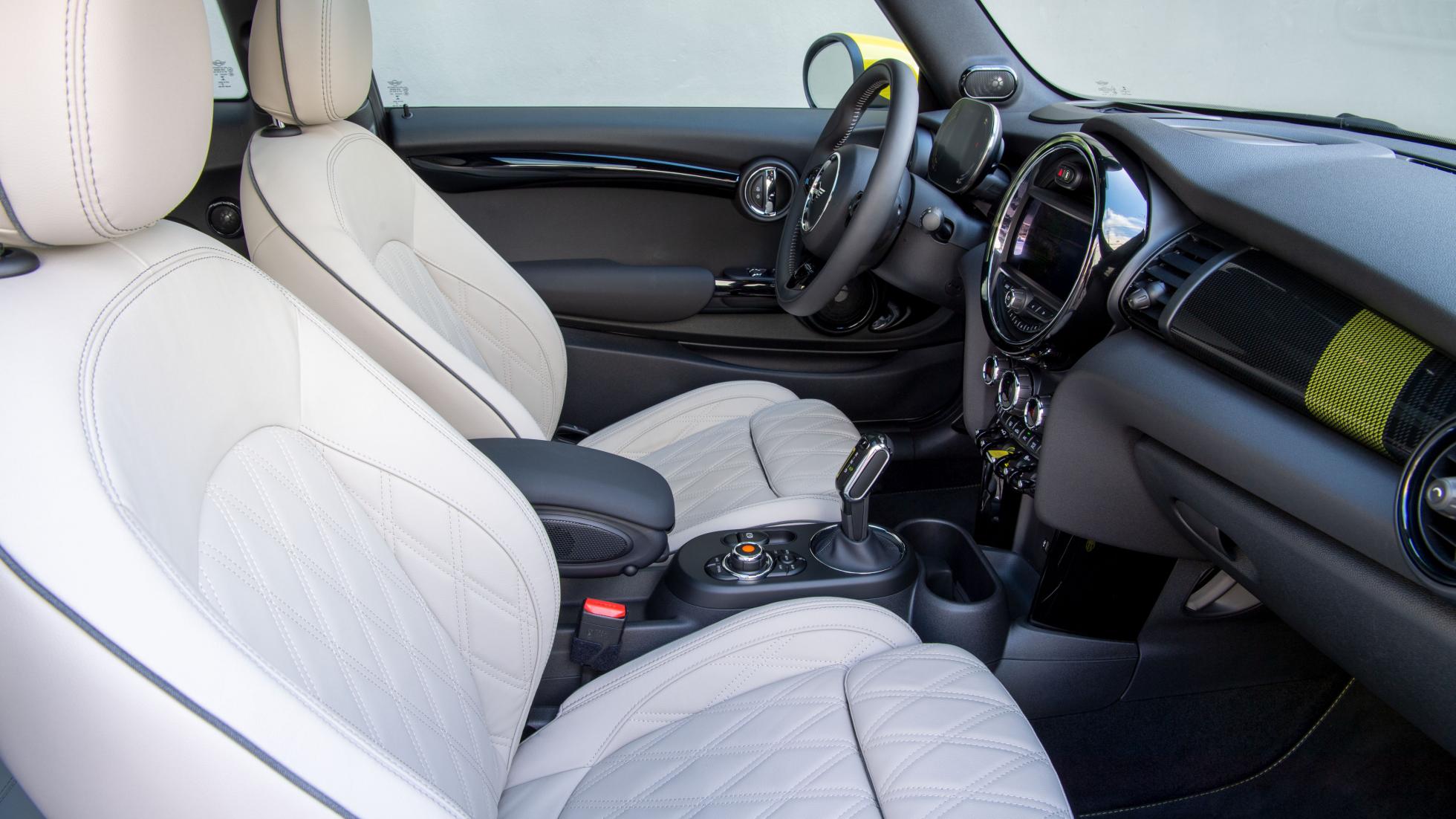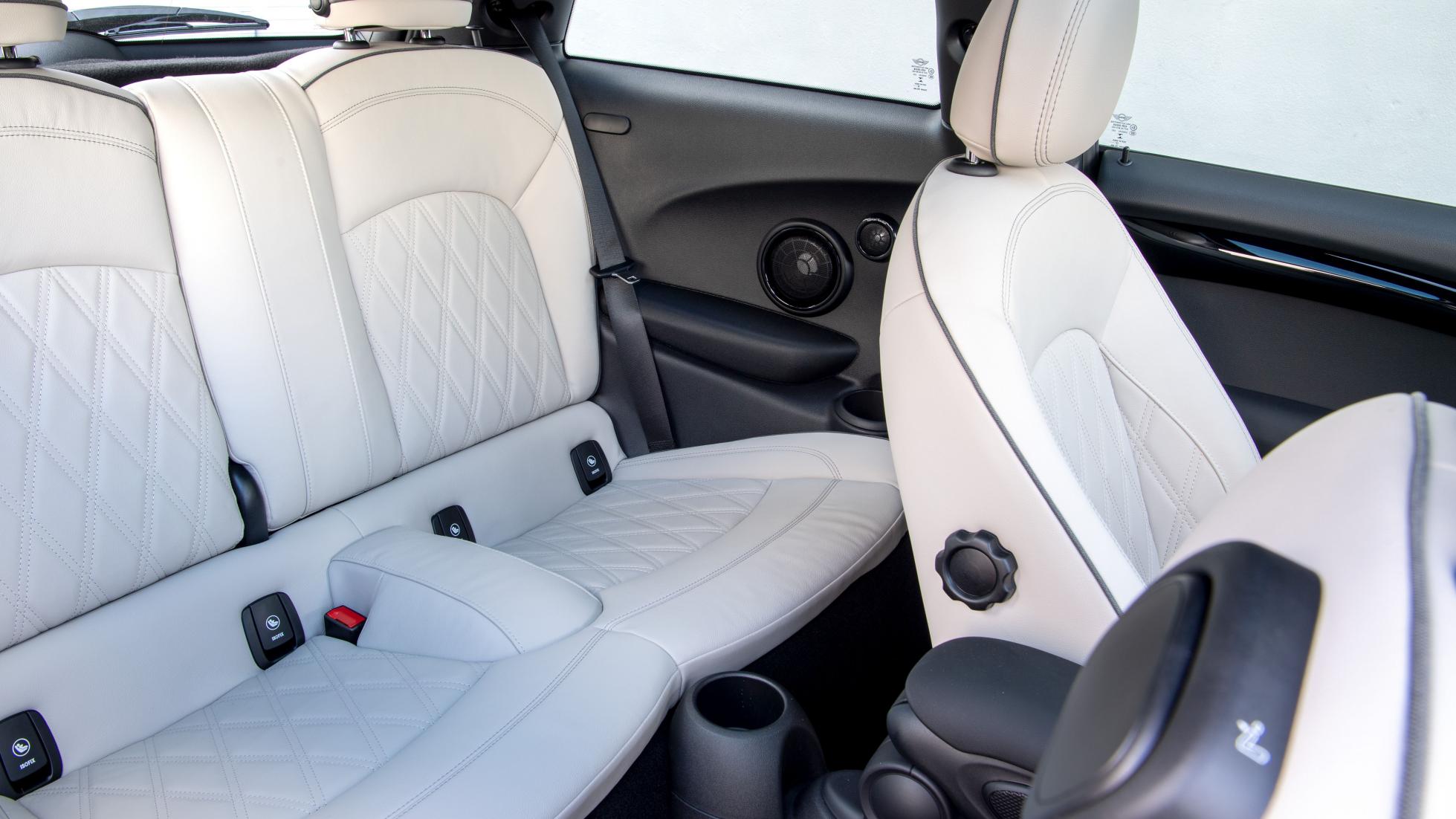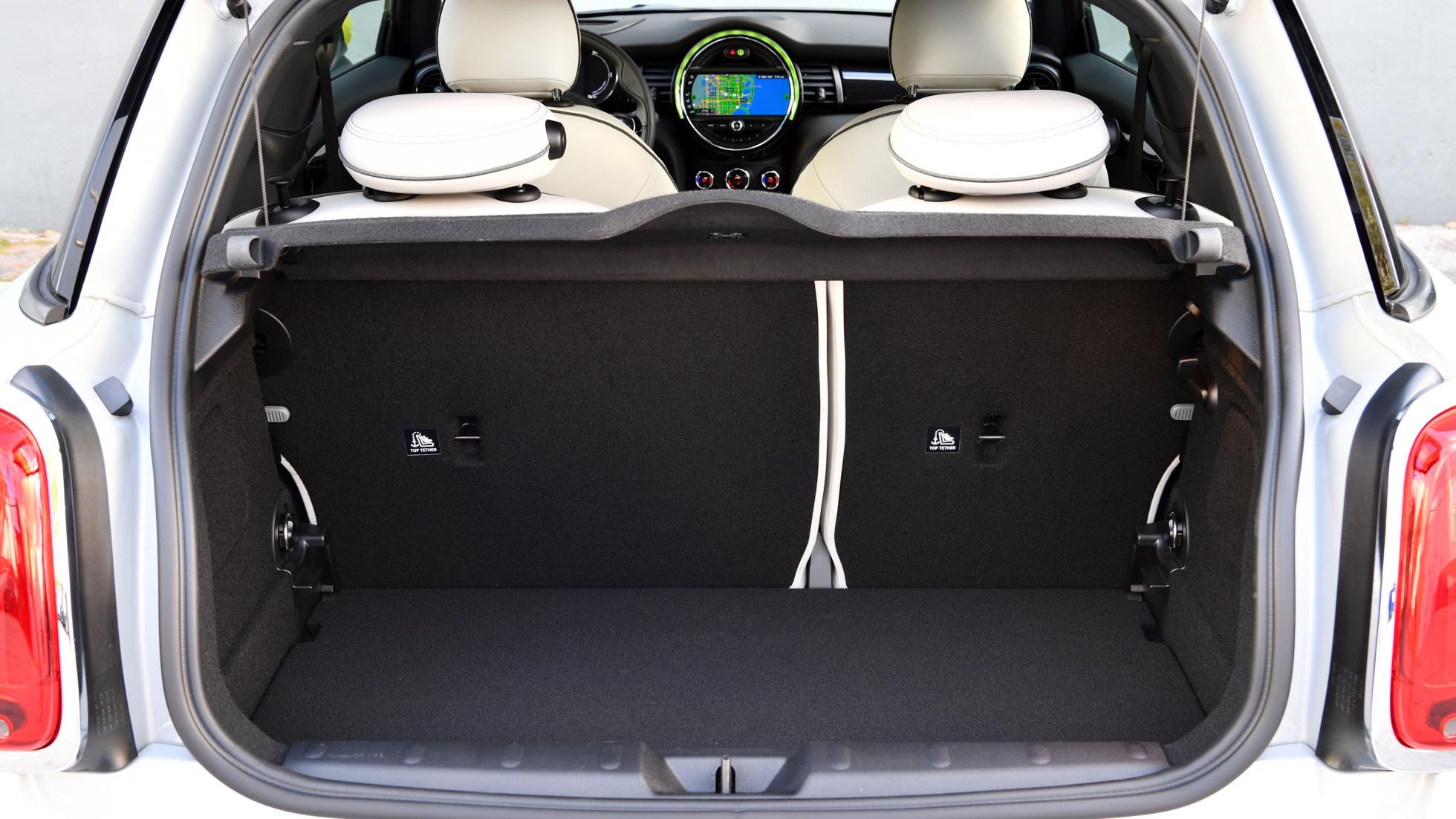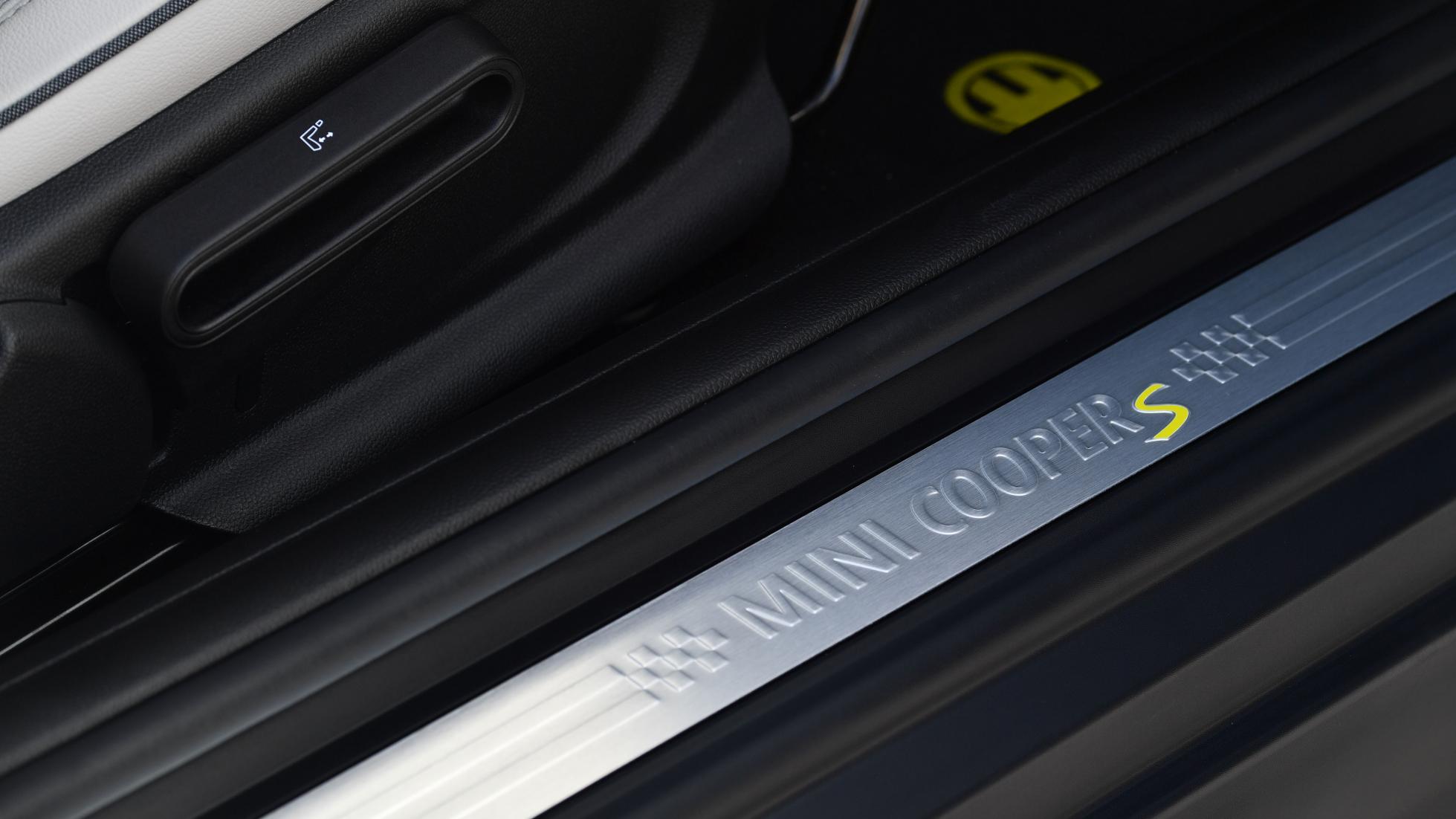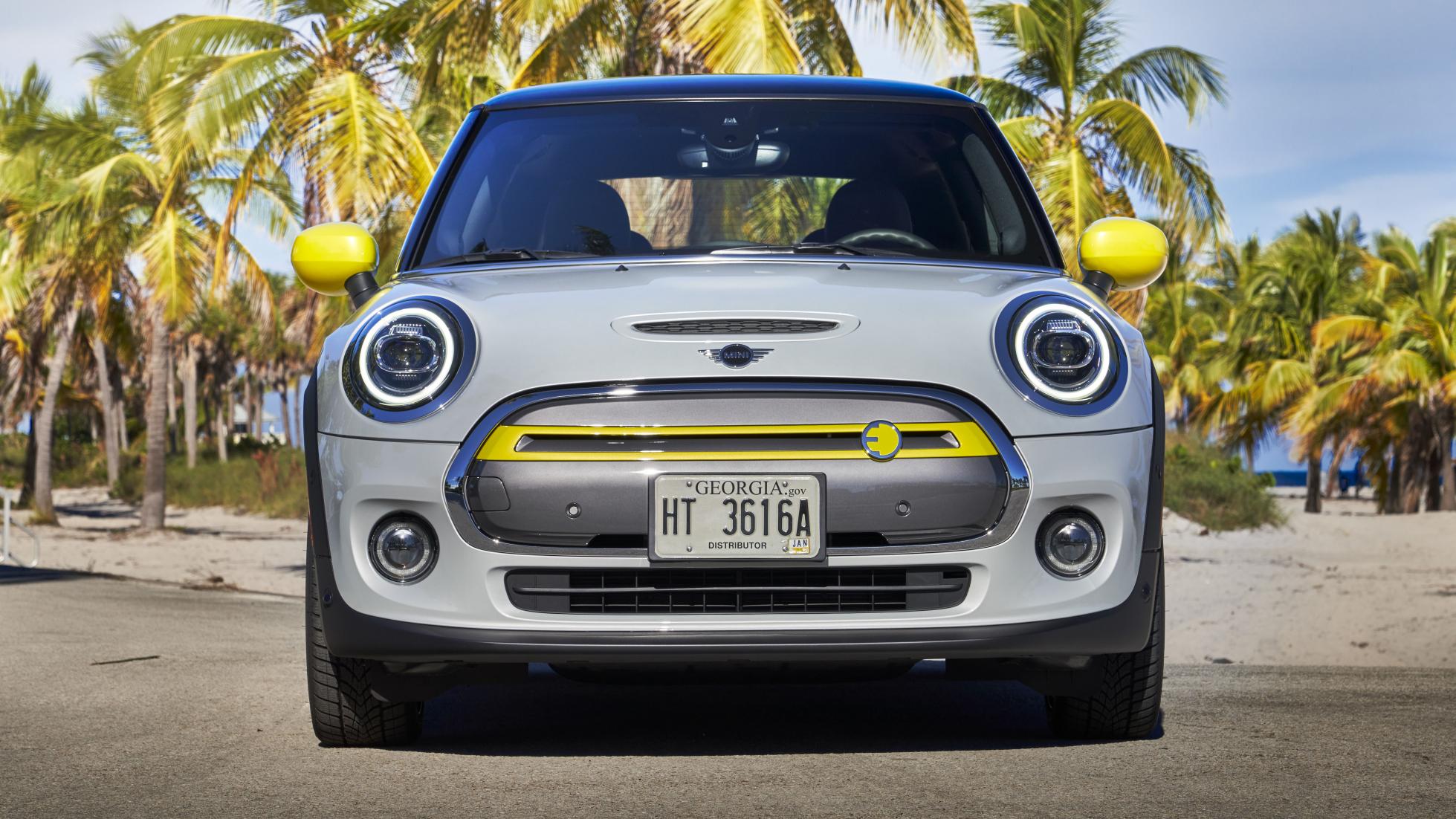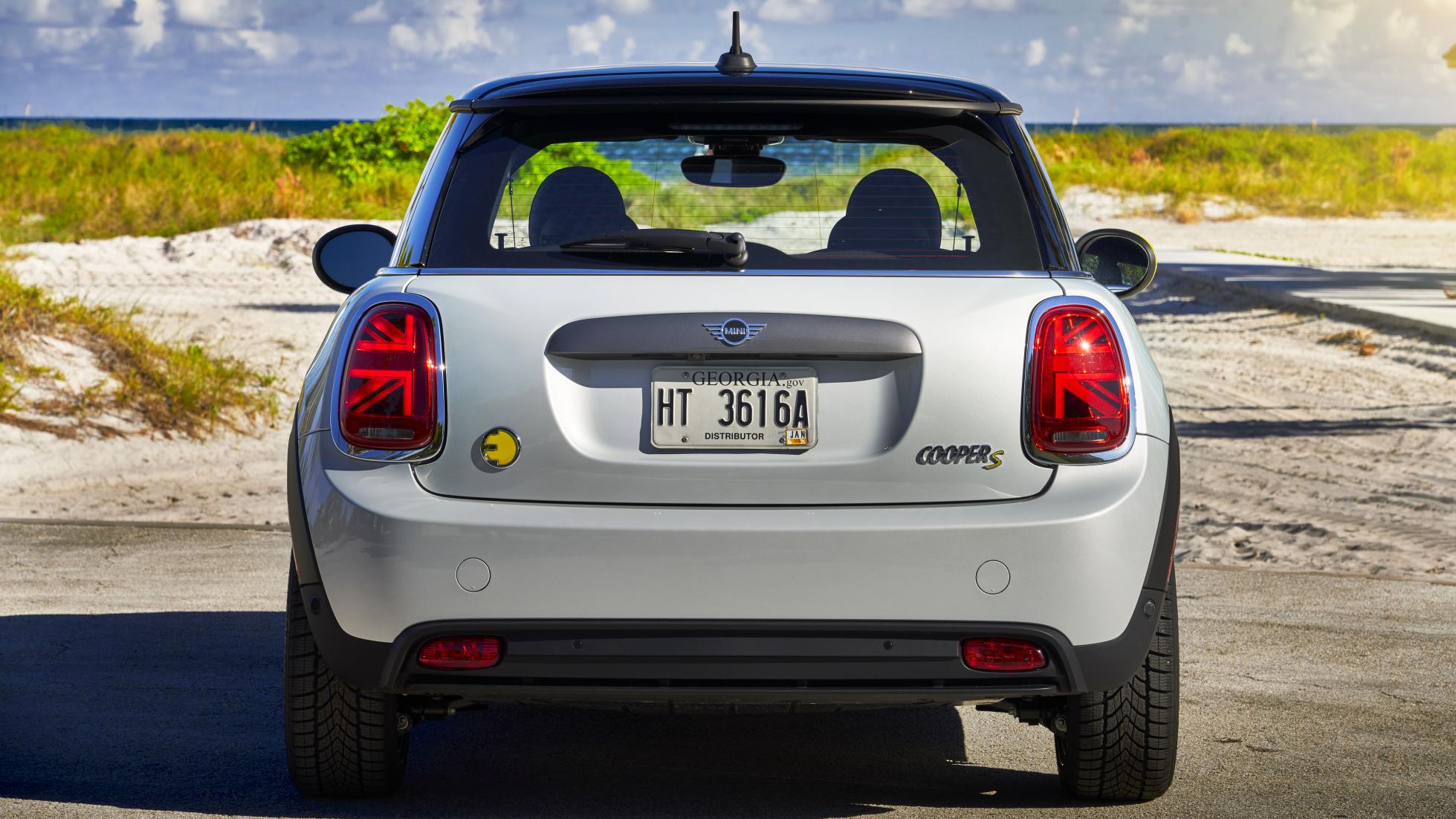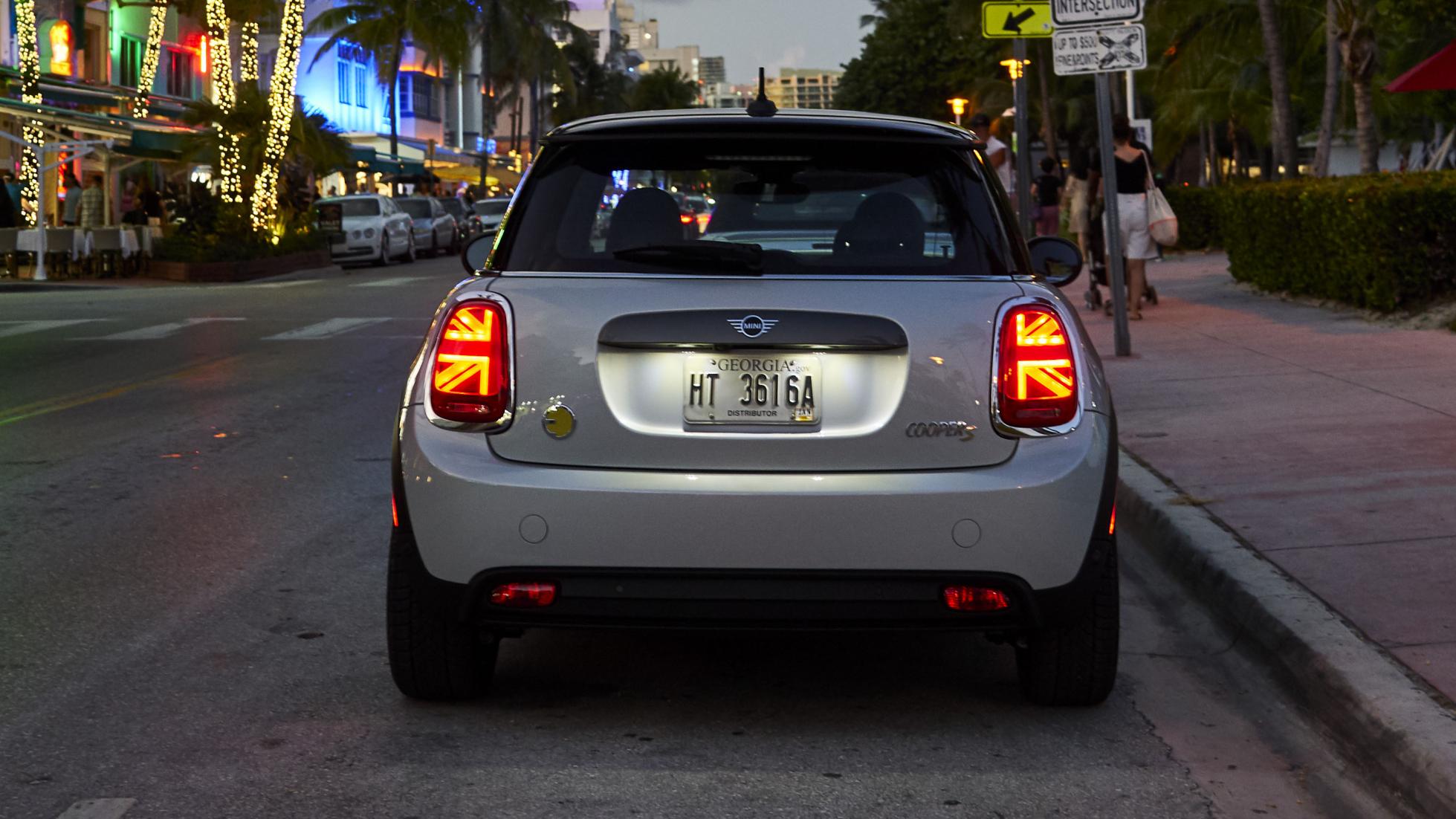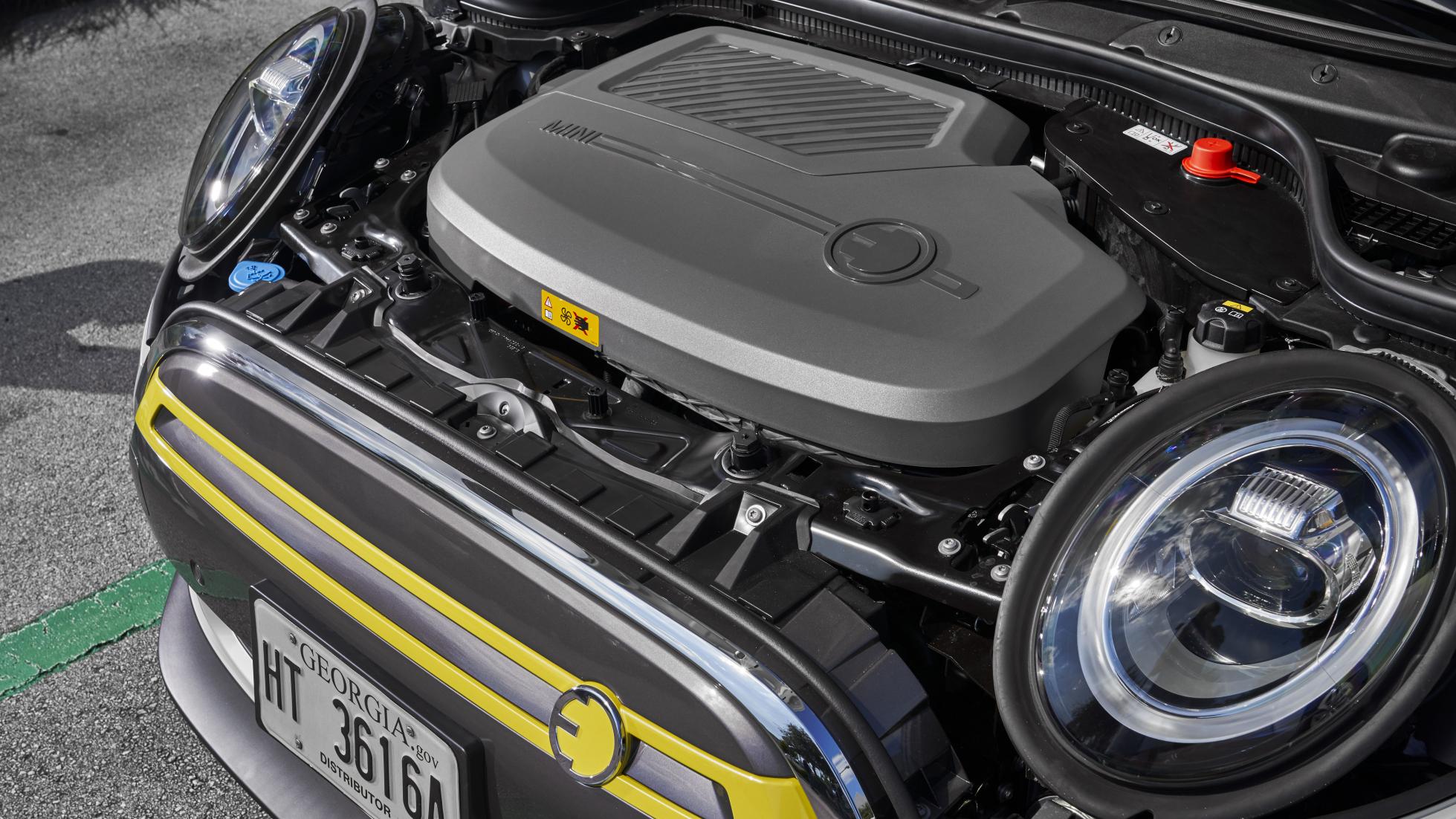Mini Electric review: 182bhp EV hot hatch tested
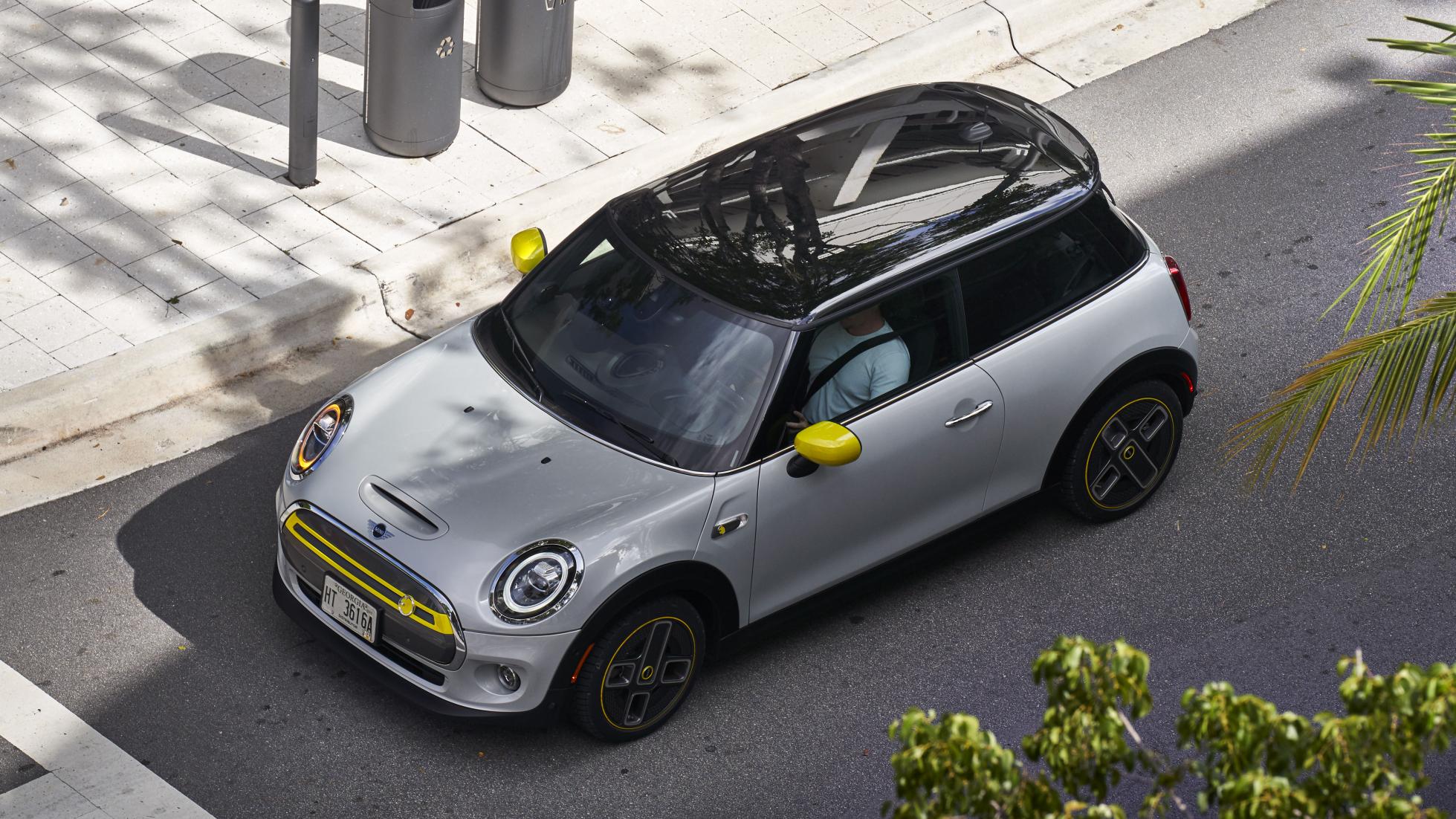
OVERVIEW - What is it?
It’s the Mini Electric, if you’re buying one in Britain, where this car is built. If you’re hailing from anywhere else in the world then, confusingly, this is the Mini Cooper SE. And wherever you buy it, you still get a fluro green-tinted ‘Cooper S’ badge on the boot. What’s underneath, however, remains exactly the same. Welcome to the age of the fully electric Mini. This could be a big one.
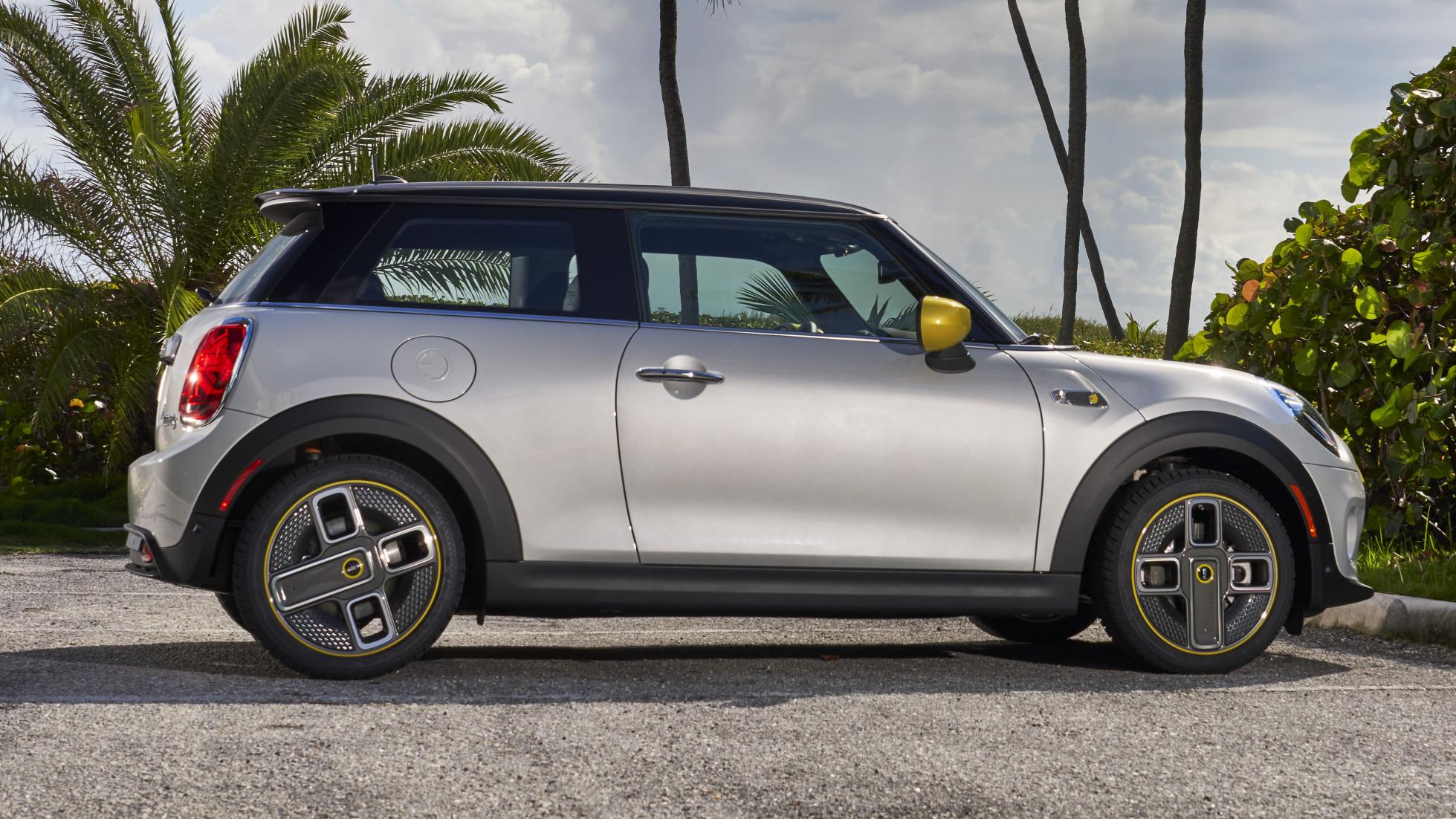
Why? Because Minis are objectively desirable. BMW’s reborn city car consistently sells strongly, offers rock-solid residual values, and drives with a slightly cartoonish but ultimately endearing vim. It’s the sort of car owners give names to. It’s cute and well-put-together enough that the premium prices have never been a barrier to its rampant success. And now, there’s one that you plug in instead of fill up.
Driving the front wheels, there’s a single electric motor, dishing out 182bhp – the same power as a 2.0-litre petrol-powered Cooper S. The Mini Electric is heavier however: 145kg heavier than a Mini Cooper S with the automatic gearbox.
But, the torque is instant, the centre of gravity is lower, and Mini has worked tirelessly (using battery intel harvested from the BMW i3) to package the cells into the three-door hatchback’s shell. So, while it’s hardly the most spacious car in its class to start with, Mini can and does proudly claim that the legroom and boot space hasn’t been swallowed in any way by pesky batteries.
Type the words ‘Mini’ and ‘Electric’ into Google and the first predicted search it’ll offer you is ‘Mini Electric range’. So, here’s the news: Mini claims a range of between 124-144 miles (199-231km). On a direct comparison with a petrol-juiced Cooper S that’ll average low 30s to the gallon (approx. 9.4 litres/100km) and get over 300 miles (483km) per tank, it looks catastrophic. But Mini is defiant: choosing this sort of range compromise keeps the battery size, weight and charging time manageable – not to mention the cost – and suits the use Mini predicts folks will use the car for. So, if they’ve got their sums right, this thing will be a phenomenon.
Good news is, the chassis team haven’t simply been down der pub while the marketing bods get to work…
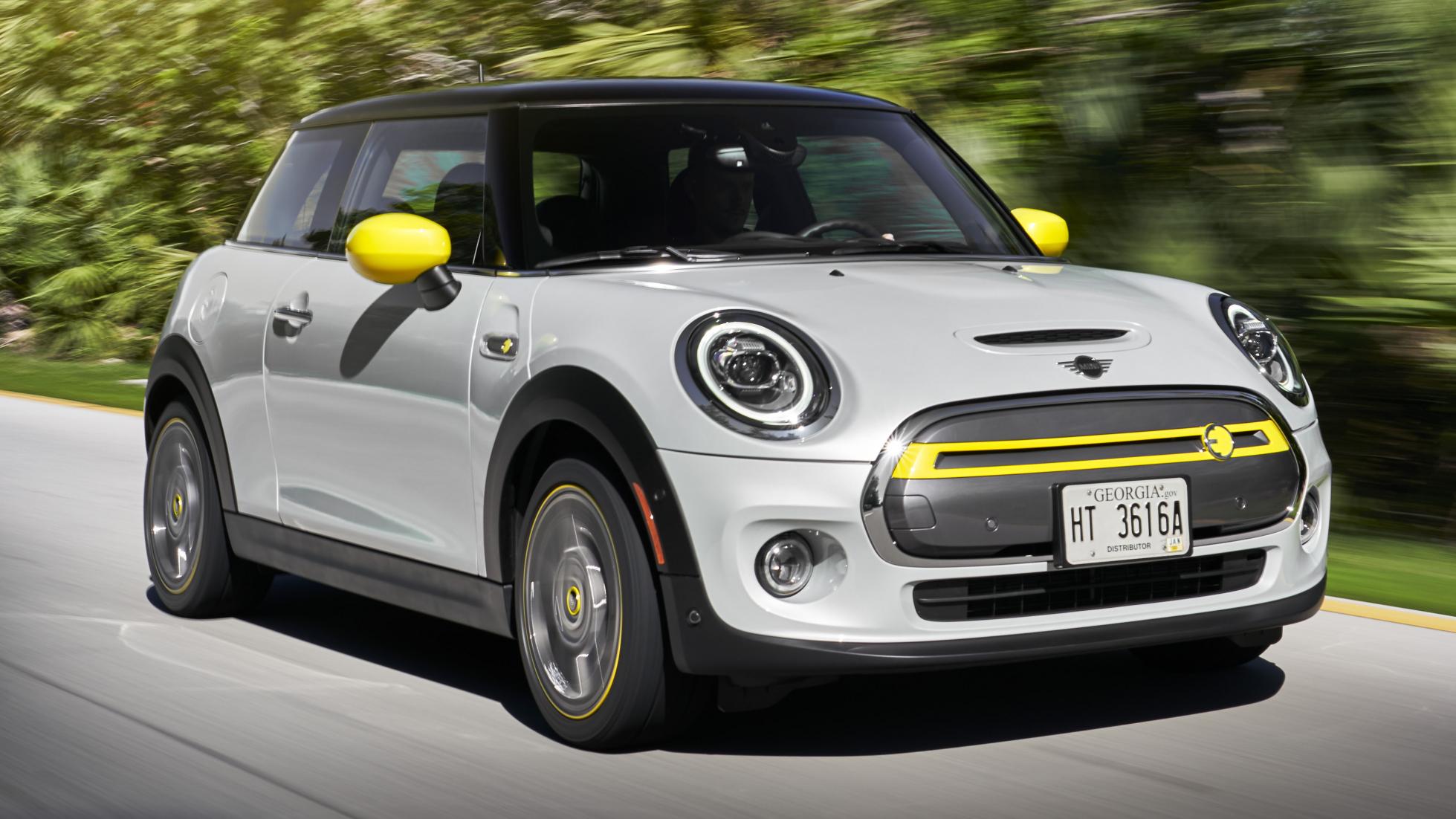
DRIVING - What is it like on the road?
The bad news is the Mini Electric weighs in 145kg heavier than the petrol Cooper S. But there is some good news to counter that. Firstly, the weight bias is further back, spread more evenly along the car, so it’s better-balanced. Secondly, that weight is carried lower in the chassis. The centre-of-gravity lies 30mm deeper than the dino-fuelled hot hatch, despite the body actually standing 18mm taller to make room for the battery. Overall, that’s good news for cornering.
So it proves: the mini Electric is an agile, chuckable little hatchback. It’s also more jiggly-riding and less alert than a normal Mini, because while you can put firmer suspension on 145kg of flab, and hang it lower in the body, 145kg is still one hundred and forty-five kilograms. A 1,365kg supermini is a porker, and you can sense this. Crucially, though, it doesn’t spoil the experience. It’s something you notice and then get used to. A standard Mini is nowhere near as plush-riding as, say, a Renault Clio anyway. It was already the sporty end of the spectrum.
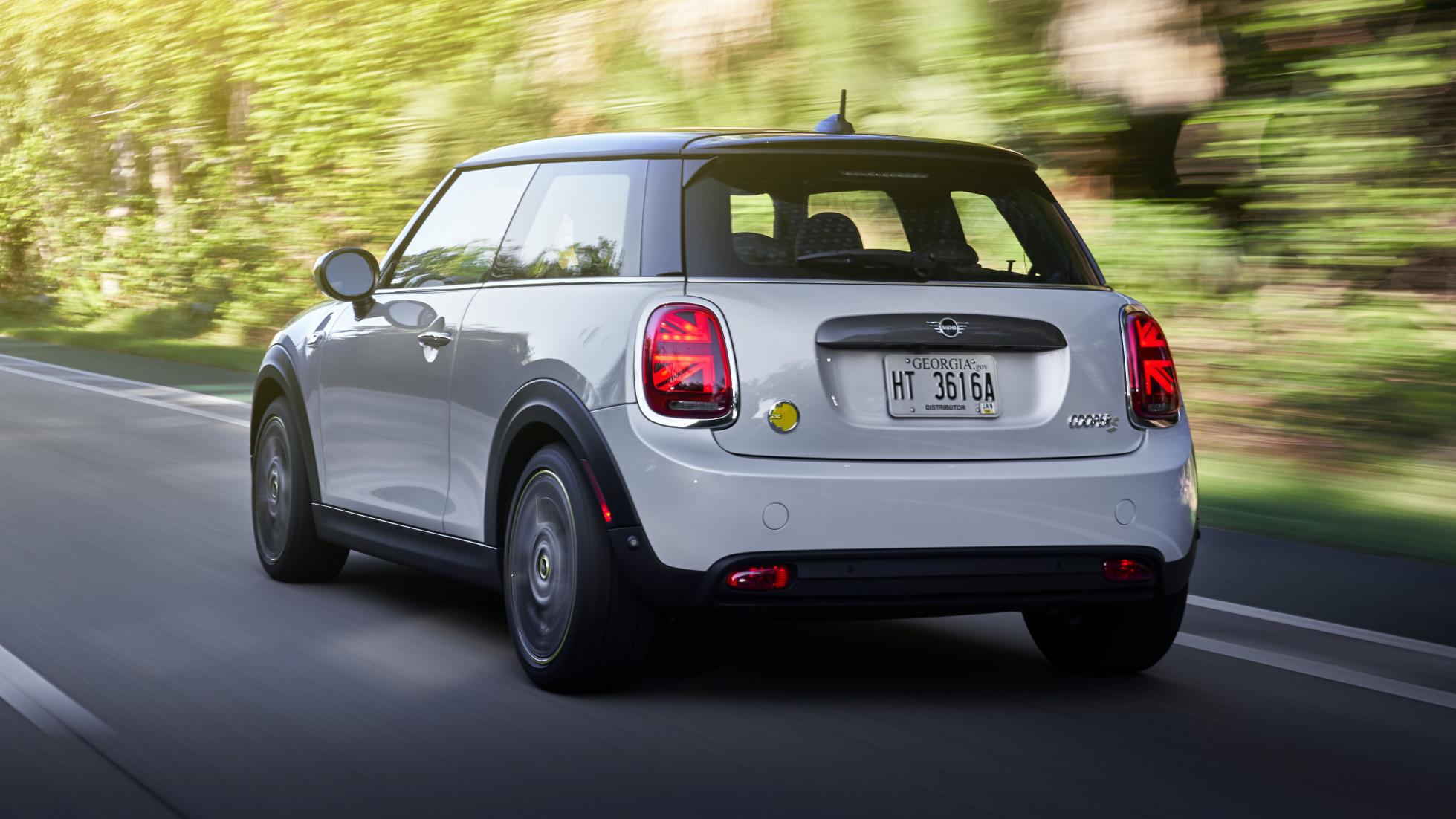
The motor develops 182bhp and 270Nm, which is enough to shift the lardy-but-nippy Mini from 0-100kph in 7.3 seconds, which isn’t quite standard Cooper S pace. It doesn’t matter. It’ll do 0-50kph in 3.9 seconds, which is plenty rapid enough for urban combat. This isn’t a one-trick pony EV that’s all acceleration and no manners. The performance feels balanced with the handling, and thanks to the BMW i3’s exceptionally clever traction control, which anticipates slip instead of reacting to it with stabs of wasteful braking, you’re never wasting valuable charge with messy wheelspin.
Braking happens… automatically. If you want it to. Mini has borrowed BMW’s ‘one-pedal’ function / boon / gimmick from the i3. So, if you lift off the go pedal, the re-gen will slow the car as aggressively as a medium dab of the brakes, funnelling otherwise wasted power back into the battery. You can turn this down to allow the car to coast, using one of the toggle switches on the dashboard. Hmm. We’d have preferred this to have been activated by paddleshifters, but there aren’t any. And the gear-selector stick doesn’t dial up the re-gen either.
Every time you switch the car on, it’ll default to its hi-regen setting, so on balance it’s less hassle just to get used to the more efficient mode. And speaking of modes, for even more Greta-pleasing driving there are Green and Green Plus modes to dial back throttle response and even disable the climate control if you’d really like to boost your range. Click the switch in the opposite direction and Sport mode perks up the powertrain.
Happily, it doesn’t inject any fake noise into the cabin, though whatever mode you’re in, the Mini emits a subtle, likeable sci-fi electro-drone to warn pedestrians of its presence. Inside, the only noise to speak of is a little wind flutter around the slightly more angular, aerodynamic door mirrors.
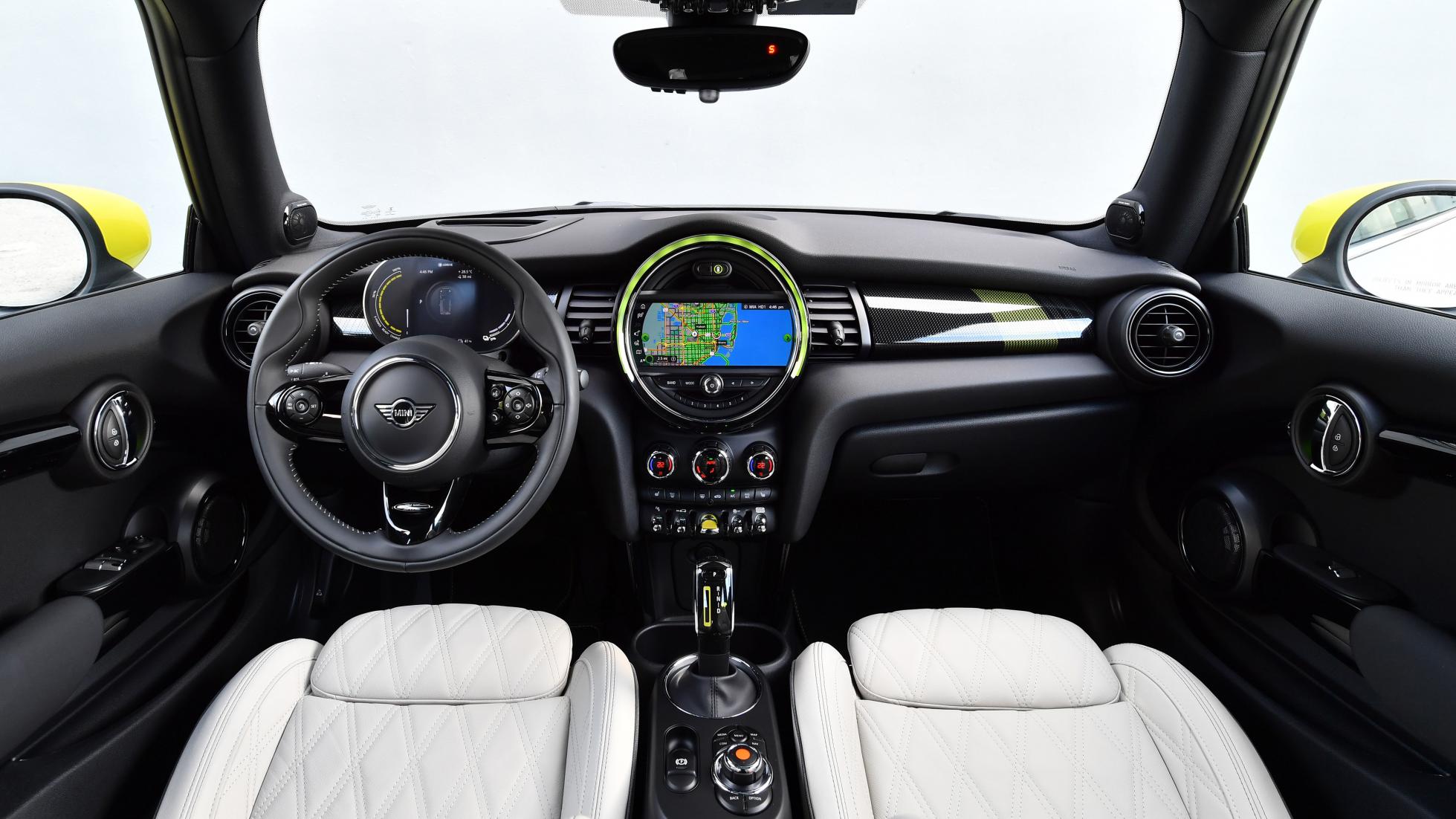
ON THE INSIDE - Layout, finish and space
Very little new here – but also little that’s going to offend or distress. The Mini cockpit is dating hard now – the top-spec 8.8-inch oblong screen (now touch-sensitive as well as iDrive-operable) looks absurdly obtuse shoehorned into the circle motif that used to house a speedo. Though the screen itself is a joy to use, the caricature design is starting to grate.
But at least we’ve still got tactile, physical climate controls instead of a touchscreen sub-menu. The toggle switches still look charming even if they’re a little fiddly to use, and the new screen behind the steering wheel showing speed, charge, range and trip data is a huge improvement on the previous do-it-all dial.
Mini is at pains to point out the battery has been housed deep in the chassis where it can’t impinge on boot volume, which remains 211 litres. That’s on the small side for a supermini, but splits the likes of the Honda e (151 litres) and the Renault Zoe (335 litres). Both of those rivals are five-doors too, while the mini is stubbornly a three-door. Again, Mini says its research suggests most owners treat their Mini like a two-seat coupe and use the back seats chiefly as a parcel shelf, so the meagre rear access and pinched rear space needn’t matter.
As ever, the driving position is low, straight-legged, the steering wheel telescopes plenty from the dash, and overall, the driving position is superb. There’s a useful bevy of stowage in the door pockets, under the charging sockets and in the armrest. It’s all very well put-together too, certainly more expensive-feeling than say, a Renault Zoe or conventionally-fuelled Audi A1. A Honda e might well feel homelier, though. It’s the new face of retro, inside.
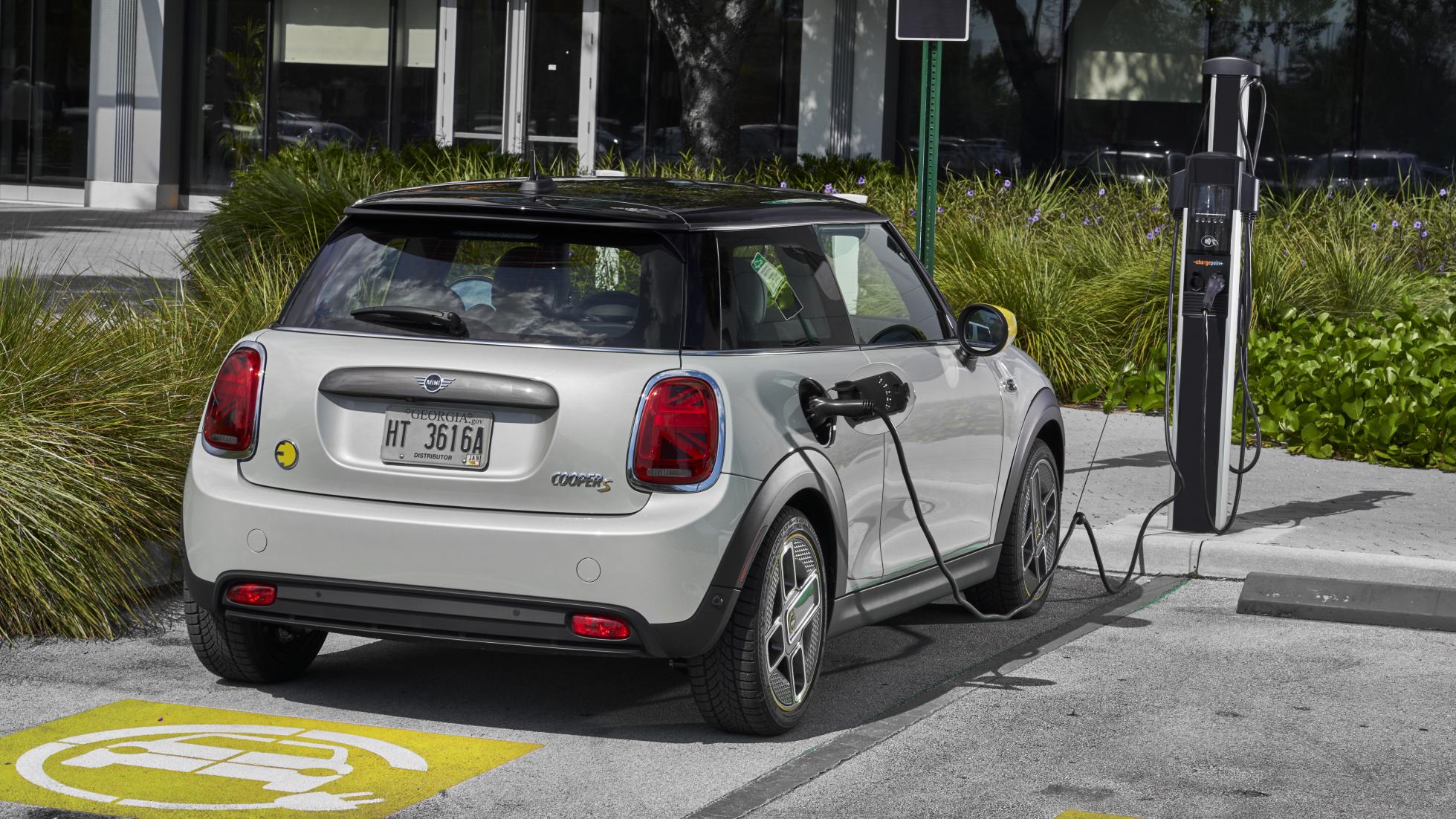
OWNING - Running costs and reliability
Mini claims the Electric / Cooper SE will do between 124 and 144 miles (199 and 231km) on a charge. On test – a temperate day in Miami traffic with the air-con on and braking re-gen set to ‘very’, a full charge claimed 121 miles (195km) was on hand.
After 23 miles (37km), 84 per cent charge remained, with 90 miles (145km) the claimed range. Another 37 miles later (59km), charge dropped to 75 per cent. In city traffic, with the occasional squirt off the line from 0-50kph-ish flat out, the car claimed consumption of 4.8 miles (7.7.km) per kWh. That’s pretty efficient, and with a 32.6 kWh battery on board, would indicate the day’s range at over 150 miles (241km).
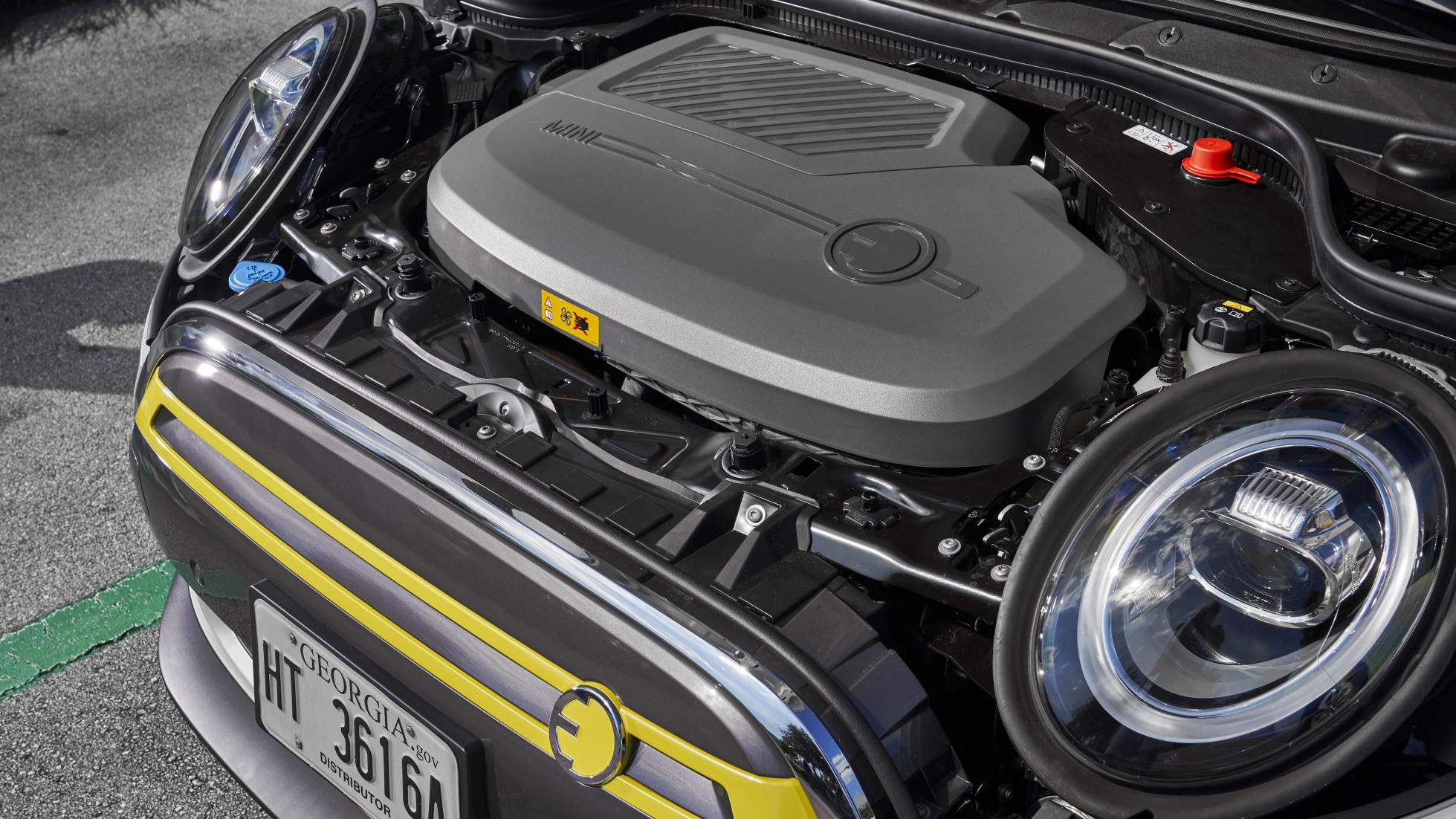
That serves to reinforce Mini’s point that, if you use the Mini Electric as an urban runabout with some useful insta-go performance, it’ll actually last long enough for a week’s worth of commuting. If, on the other hand, you want to do a track day, you’d best bring a generator with you.
So, to charging. As standard, Mini supplies the car only with a household three-pin socket-compatible lead, which will be enough to keep a mid-charged car topped up overnight (on cheap-rate electricity, if you can swing that tariff) but for quicker recharges, Mini will charge you extra for a wallbox. This, plus the 11kW cable, allows for a full recharge in 3.5 hours, or from empty to 80 per cent in 2.5 hours. If you can find a fast-charge station that’s operational (over to you, UK network providers), then nought-to-eighty per cent takes 35mins. Most likely, the Mini Electric will be a second car to a household already furnished with a PHEV estate or SUV-type car, so the Mini can suckle at the wallbox when the bigger family car isn’t being charged.
And so, to the price. Does anyone look at the RRP of a car these days? Not likely. The Mini Electric’s sticker price starts at £27,900, but apply the £3.5k government plug-in grant (why wouldn’t you?) and – presto! – it’s £24,400 for the basic ‘1’.
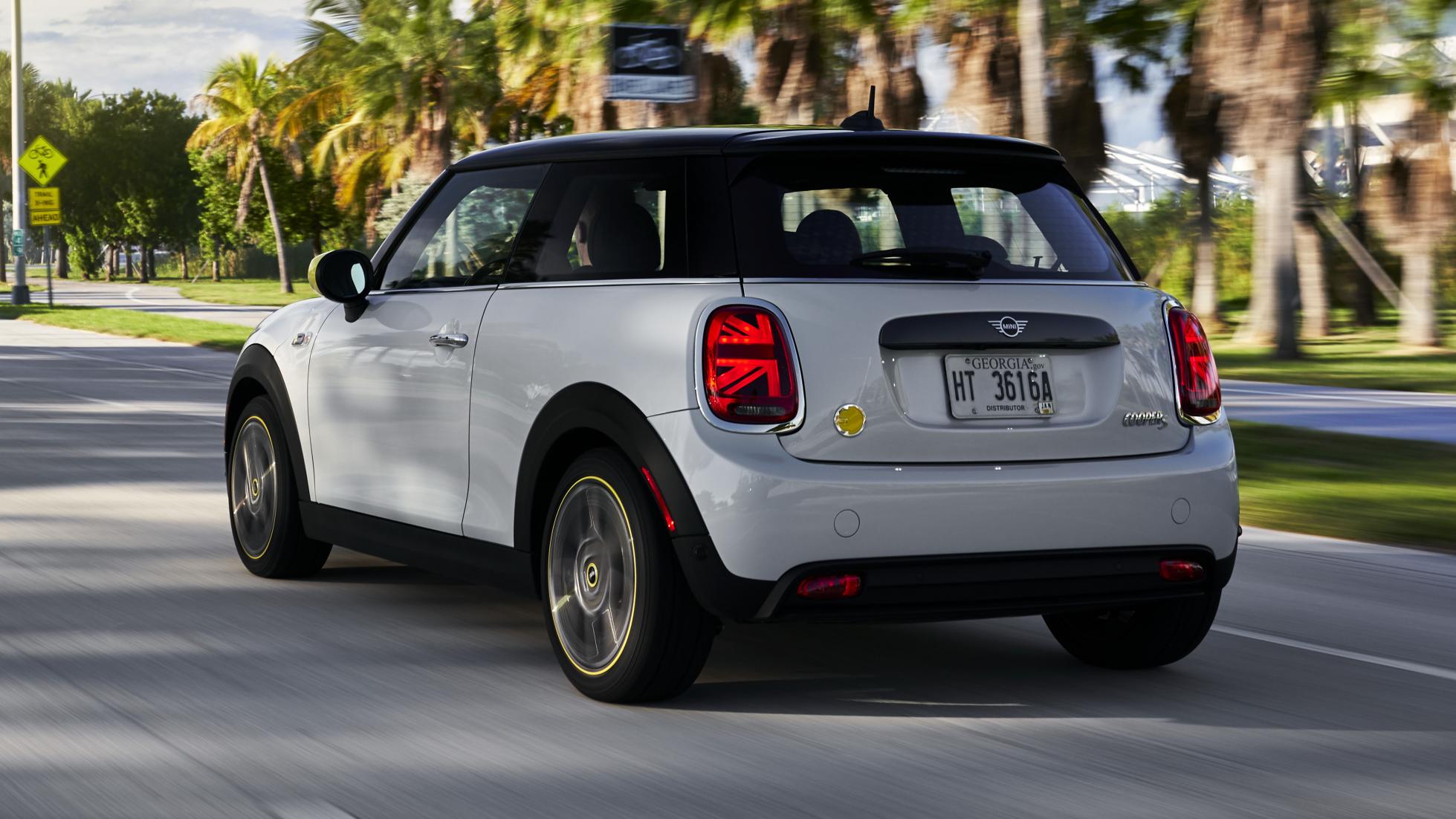
The mid-spec ‘2’ version (£26,400 after the grant) adds seats that’ll warm your bum (rather than the other way around) and parking sensors and a reversing camera, so it’s a tad less clenched. A head-up display, premium hi-fi, the cinematic touchscreen and matrix-beam LED headlights arrive on the top-spec ‘3’. For £30,400, including the subsidy.
Mini’s famously healthy residual values ought to make for competitive leasing deals, and with a reputed 4,000 pre-orders in the bank, signs are that this is much more than a woke eco-footnote in the range. It’s here to make money. And that’s why it’s nowhere near as radical as the BMW i3…
Oh, and if you don’t like the vivid highlights, you can delete them at no cost. The three-pin socket-style 17in wheels, that no-one apart from Brits recognise as a plug-in motif? They’re an option – 16s are standard.
VERDICT
The Mini Electric is a very complete little EV. It preserves pretty much everything we like about a standard Mini Cooper S, but it’s more accelerative where it matters, and has zero local emissions. It proves that the hot hatch will have a future as an EV. And it reinforces something we learned with the VW e-Golf – that an electric car doesn’t have to be wantonly radical to be a success. Stuffing a car we already know and like with batteries can, with the correct execution, be a good tactic.
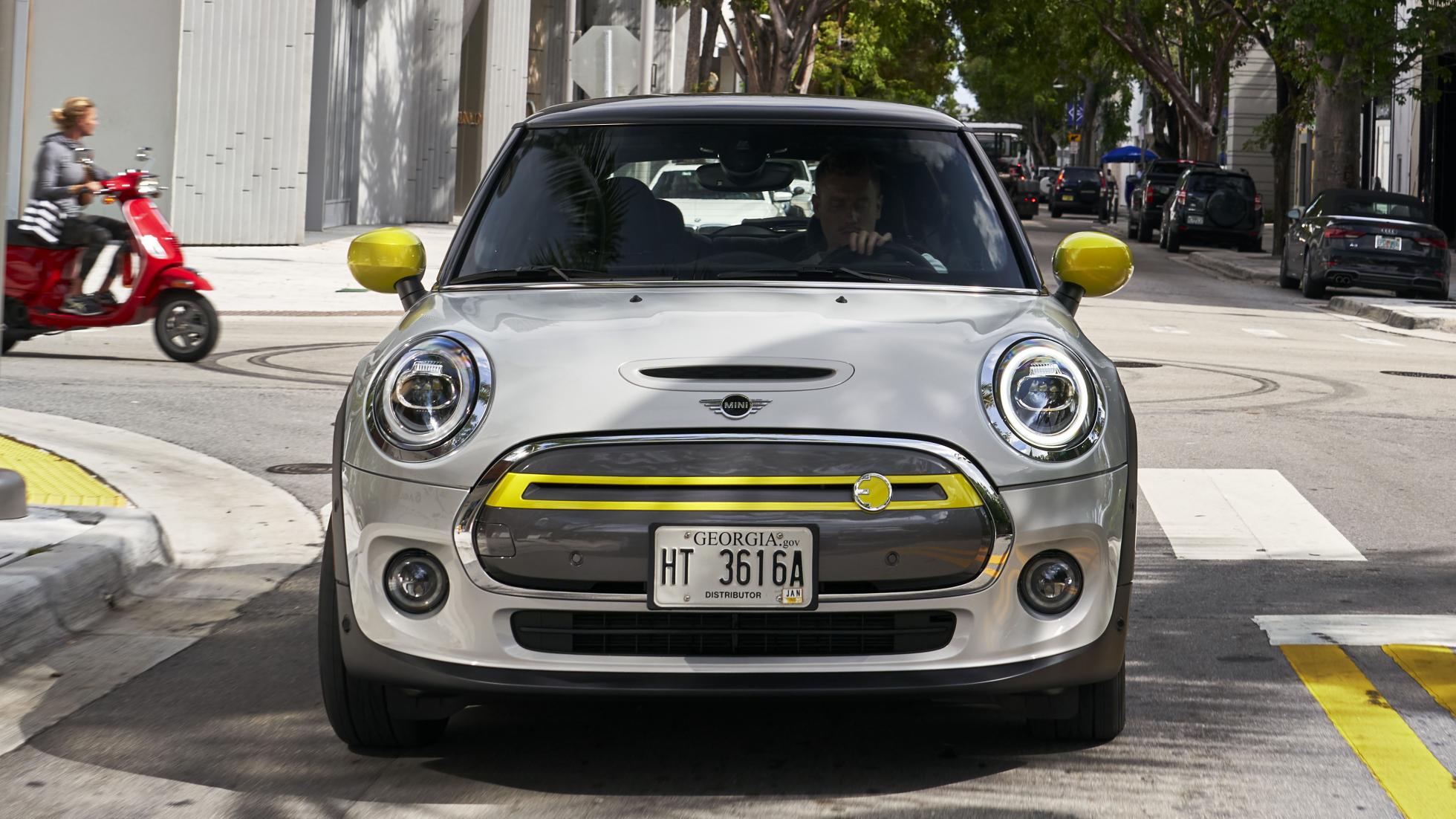
However, the Mini asks you to understand a few home truths. BMW could have given it more range. But, that would have made it heavier, more expensive, taken longer to charge, and invade cabin space. So, it’s studied a lot of Mini owner data, sussed out the average Cooper S travels 26 miles (42km) a day, or around 180 miles (290km) a week, and moulded the Mini Electric’s performance to suit that brief, needing only a couple of recharges to slip into the average Mini audience’s life unnoticed.
It feels like a strong addition to the Mini family. We’ve always championed the weight-saving, space-giving packaging of the BMW i3, but it’s not been the sales dead-cert the investment required, so now it’s over to Mini to see if the conventional approach can do the numbers.
A surprisingly rounded EV. Still fun to drive, and uncompromised inside, but it’s likely to be your second car
| FOR | AGAINST |
| Mini’s trademark agility survives (almost) intact. Useful pace. Battery doesn’t eat into the cabin | It wasn’t that spacious in the first place, and the ride’s tougher than a petrol Cooper S. Only you can decide if 120 miles (193km) is sufficient... |
| SCORE | 7/10 |
